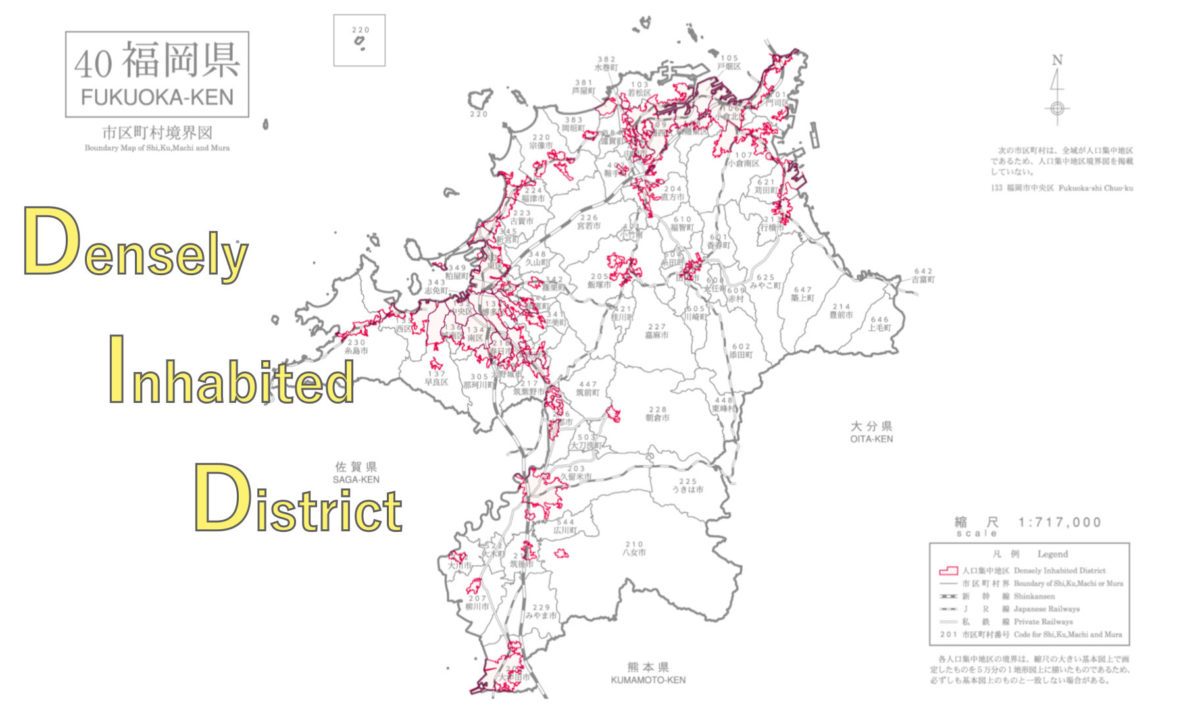This article is for those who want to understand DID districts .What is a DID district? I will explain what kind of indicators it is used for and so on.
Hello!
I’m a blogger who publishes information that is useful to my work in relation to architecture, urban planning and real estate.
To be honest, I once thought that DID districts were only relevant to students of urban planning and a few government officials, but if you use this index well, for example, you can use it to consider how to develop strategies for opening restaurants in an area.
Densely Inhabited District
A DID district, as calculated by the census, which is conducted every five years, is simply an area with more than 4,000 people per square kilometer. The exact definition is posted in detail at the Statistics Bureau of the Ministry of Internal Affairs and Communications.
Basically, just remember that there are 40 people per hectare.
What do you think about these numbers?
Whether or not it’s less or more, and whether or not it correctly represents an urbanized area.
For example, let’s assume a floor-area ratio of 400% in a commercial area such as the one in front of the station, and estimate the population per square kilometer.
Assuming that public facilities such as roads and parks account for about 60% of the total area, the buildable site area is 0.4k square meters, the use of the floor-area ratio averages 60%, and if restaurants, shops, and business facilities are taken into account, residential use is about 30%, the usable site area is 120,000 square meters, or about 290,000 square meters of floor space.
In terms of floor space per person, let’s assume that the floor space is 40 square meters per person, referring to the guidance levels in the Basic Housing Plan. That would be enough to house about 7,000 people.
Even if we do a rough calculation, this is the minimum number of people that can live in the complex, so you can see that 4,000 is a little bit low. If this is a suburban housing complex, I think that 4,000 is just about enough to maintain 4,000 people.
By the way, if there are 40 people or more per hectare (4,000 people per square kilometer), it becomes the urbanization area establishment level defined by the city planning law, so it is the same as the scenery of the town that people in Japan usually see. In large cities such as those designated by government ordinance, the number of people per hectare exceeds 100 in the central area.
Sidenote: Relationship to daily life.
In the last 20-30 years, the DID area has been increasing. Because housing development has been promoted in the suburbs, the population on the city’s fringes has gradually increased, and it seems that the population has become thinner and thinner, with no less than 40 people per hectare.
Starbucks and other businesses, the decline in population density creates inefficiencies in urban activities based on mobility by making it difficult to locate essential facilities and maintain public transportation, which are essential to daily life.





